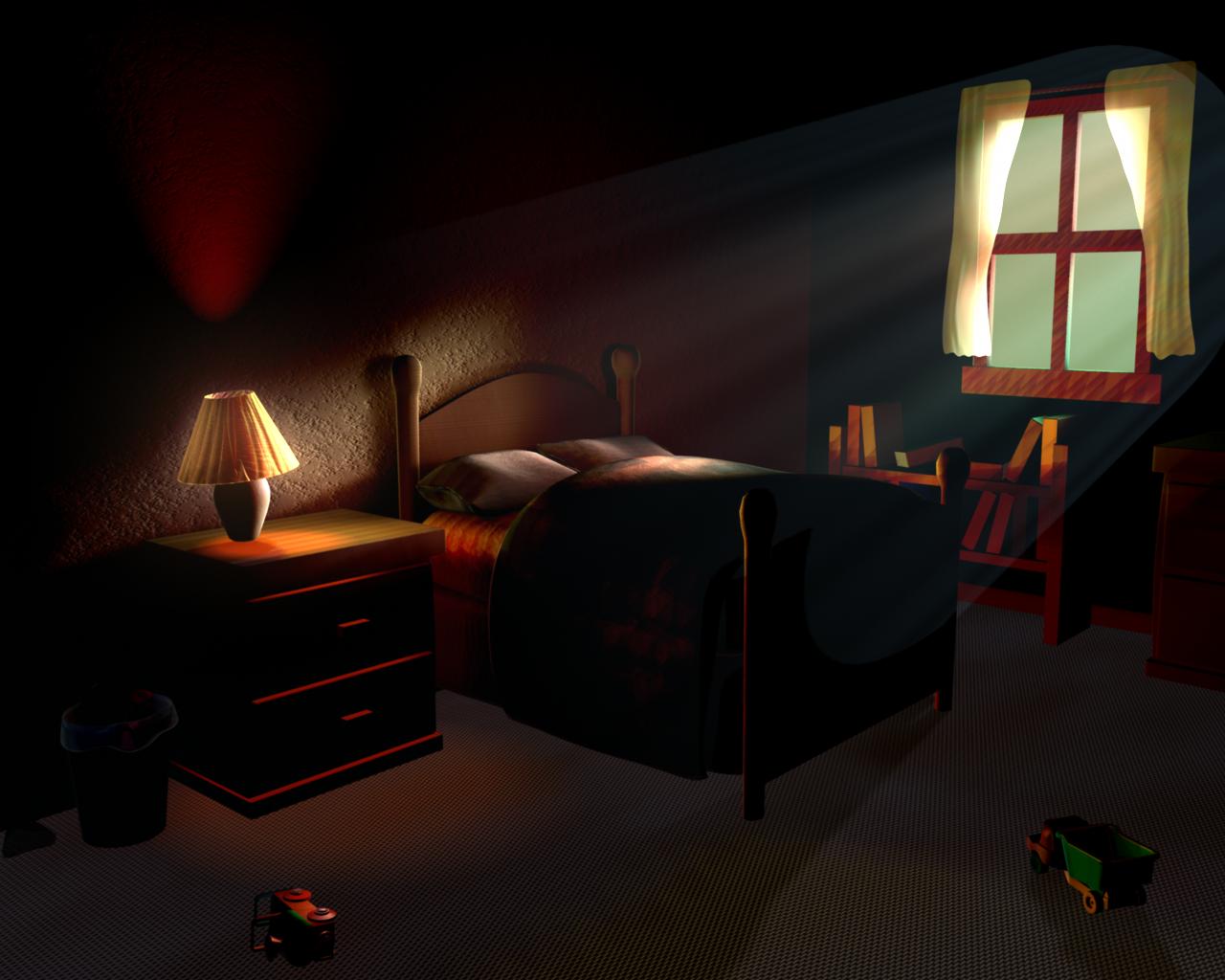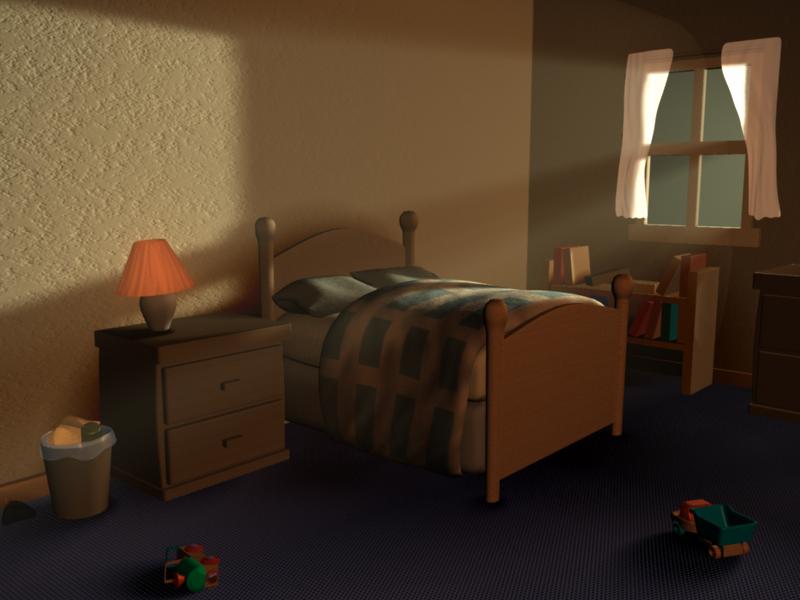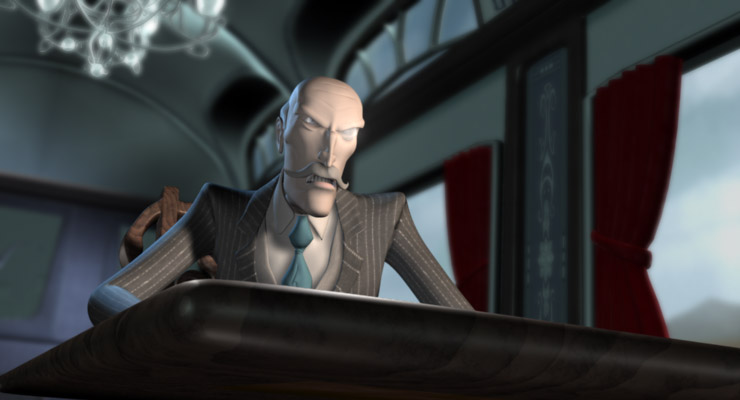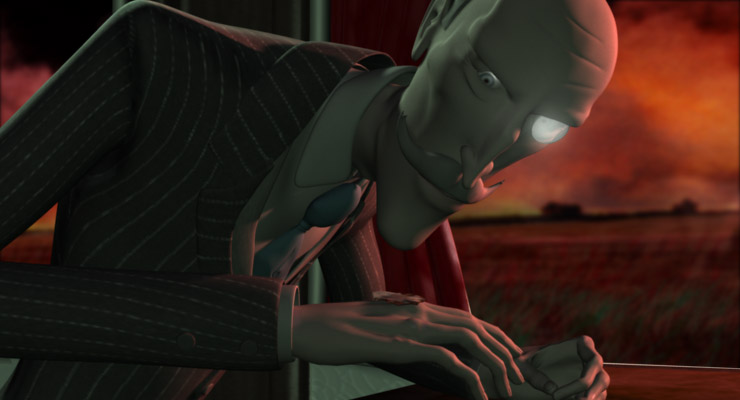Project 2b:
Room Shading and Lighting
You will now be shading and lighting the room you set up in the first part of this project, using the concept art developed last week as a starting point. The ultimate goal is to effectively communicate a specific mood through a single image. Since lighting can radically change the mood of a scene, that will be a particularly important component in this project.
- Shade your scene. You may use procedural shaders when shading the room, but it is not highly recommended. Hand crafting your textures directly based off the reference you gathered will add a lot more visual appeal to the shading.
Make sure to simplify UV unwrapping as best you can. It might be easier to separate pieces of geometry with clearly different shading schemes and apply different shaders to the separate parts rather than make a single customized texture map for the entire object. Only get fancy if you absolutely have to. Another alternative is to use 3D texture projections, which can come in handy for shading something like a wooden chair (so you don't have to unwrap a complex surface).
Most importantly, if you do not see an object then there is no reason to shade or unwrap it. The final render is what matters most, so make sure to invest your limited time only on objects we will see in the end. - Light your scene. Pay close attention the distribution of light and color throughout
your scene. Bad lighting is typically very flat, while good lighting
contains gradations. It may be tempting to make your scene monocromatic
to underline your mood, but it is generally more visually interesting
to juxtapose at least two colors.
As much as possible, you should motivate your lights. This means that the viewer should be able to understand where each light is coming from such as a window, light fixture, or a fire. This is a fairly loose guideline, but one you should think about. You should also use contact shadows where needed. An object on the ground typically casts a shadow below it. If you forget these shadows, your overall lighting will suffer for it.
Lighting is an art, not a science. Use reference. However, keep in mind that the purpose of reference is not to provide you with something to slavishly copy, but to show you what good lighting looks like.
Make sure we can see your scene. Pools of dark and dim light can be effective when deployed in the right places, but if the overall brightness level is so dark that it is difficult to see what is going on, then that is no good.And on a final note, DO NOT use Photoshop to tweak the lights in your scene. Do all of the work in Maya.
Below are various different examples of lighting schemes:






Different lighting schemes from "Kings":



